The case of Château Haut-Bailly
Acquired by Parisian banker Firmin Haut-Bailly back in 1630, the Haut-Bailly vineyard is located in the commune of Léognan, Gironde, France. After a golden age in the early 20th century followed by a period of decline, the property was bought and renovated by Belgian merchant Daniel Sanders in 1955, who then passed it on to his son Jean. In just over 40 years, this family restored the legendary Graves estate to its former glory. In 1998, American Robert G. (Bob) Wilmers acquired the château, investing heavily to establish Haut-Bailly as one of Bordeaux's finest wines. Véronique Sanders, Jean Sanders' granddaughter, then took over the running of the domaine, an heritage she manages with passion and determination.
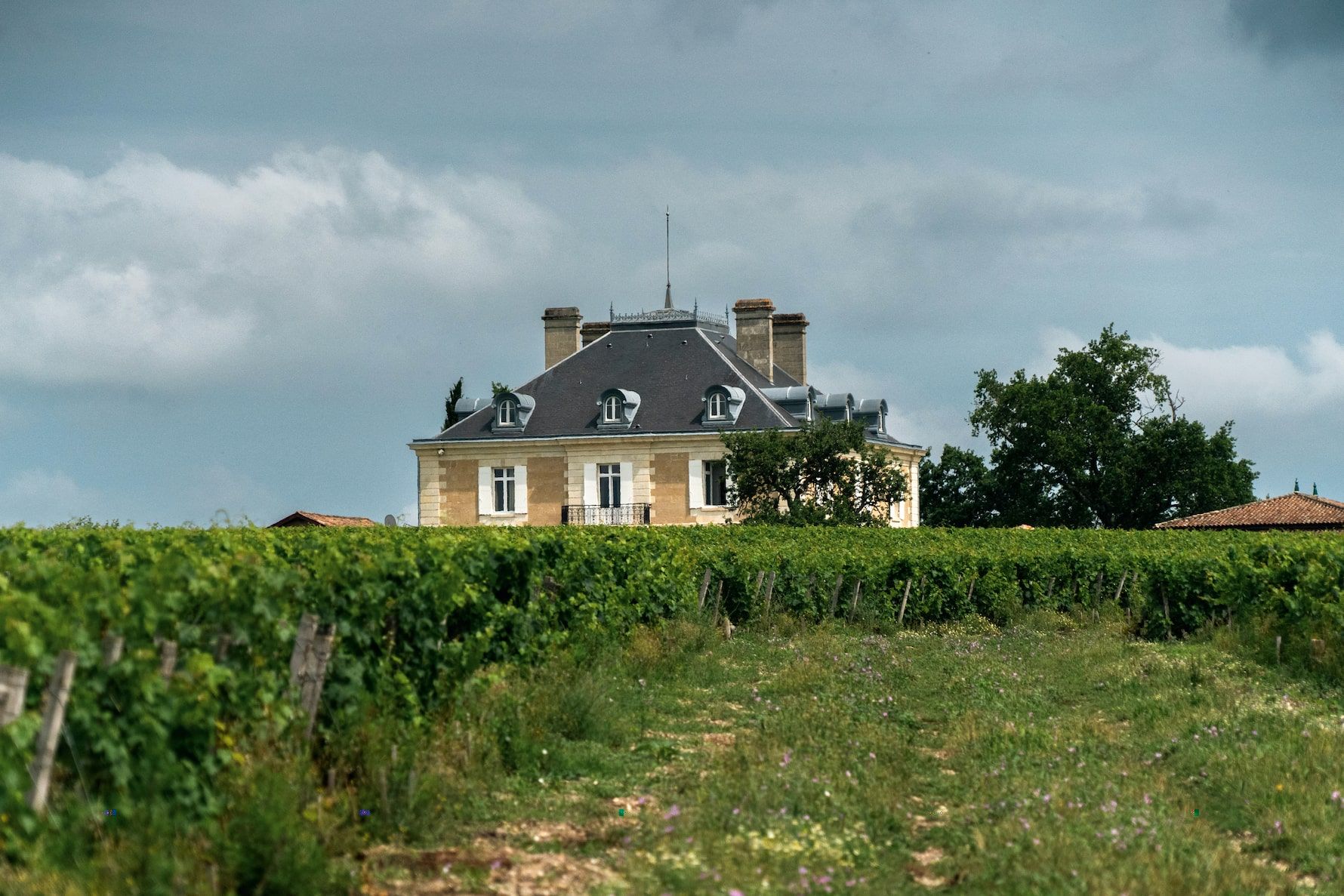
The three wines produced at Haut-Bailly (Château Haut-Bailly, Haut-Bailly-II and HB) all benefit from the Pessac-Léognan “appellation d'origine contrôlée” (AOC). Among them, Château Haut-Bailly is a “Grand Cru Classé”, making the château internationally renowned.
A vineyard in harmony with its terroir
Strengthened by its history, the Haut-Bailly property retains its philanthropic, generous and non-conformist values, in the image of its latest purchaser, Bob Wilmers. "Do well and do good." Advocating continuous improvement, it is through reasoned and benevolent innovation that the domaine serves its terroir. Calling for sobriety and temperance, the vineyard promotes harmony between man and nature.
A perfect illustration of this balance, the new half-buried winery plays hide-and-seek with the landscape, with its voluptuous architecture, green roof, panoramic terrace and fully glazed tasting room. Blending perfectly into their surroundings, it is the fruit of a 5-year collaboration between hundreds of people. Rainwater harvesting and recycling, thermal inertia, natural light, etc. the architectural work embodies all of today's environmental requirements. In this place that is both futuristic and timeless, Gabriel Vialard, Technical Director at Haut-Bailly, and his team are constantly refining their know-how and reinforcing the strong link that binds the vines to the land.
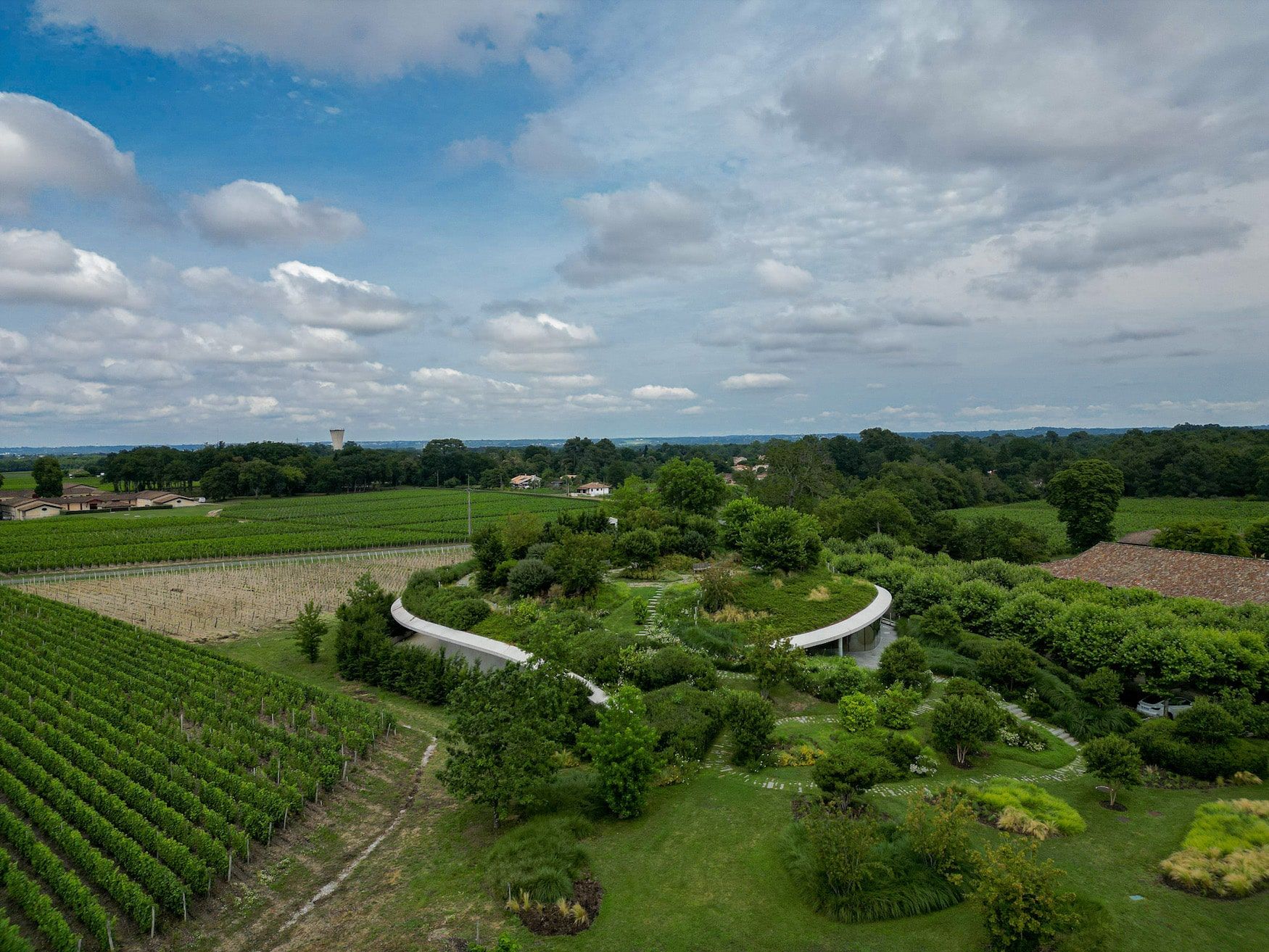
Respect for the terroir is part of Château Haut-Bailly's DNA. But for Véronique Sanders, the domaine's Director, this means going beyond simply preserving what already exists. It's about having a positive impact on the environment. It is precisely because this philosophy matches the vision of Reforest'Action, whose mission is to develop regenerative projects that create plural value, that a joint project was born between the two entities.
A tailor-made vitiforestry project
Vitiforestry involves applying agroforestry techniques to viticulture. It aims to integrate various natural plant structures (hedges, isolated trees, small woodlots, etc.) into vineyards, with the objective of regenerating natural ecosystems that are heavily stressed by winegrowing activities. The goal is to revive a naturalness that has been lost as a result of monospecific vine cultivation.
With technical support from Sylva Nova and forestry expert Pierre Hermans, Reforest'Action is running a vitiforestry project in the heart of the Haut-Bailly vineyard, a project that we are also sponsoring.

A meticulous design
On a high-value terroir like Haut-Bailly, every square meter counts. Adopting a holistic vision was essential to design a regenerative project that takes into account the needs of the Living World, the constraints of the winegrowers and the quality standards required. Despite a highly codified system, Reforest'Action was able to propose a harmonious design, respecting the balance between viticulture and nature regeneration.
- Perimeter hedges: hedges have been planted around the vineyard plots, in single or double rows depending on the available space. They contain a variety of deciduous species, such as Field Maple, Hop Hornbeam, Viburnum, Fusain, Almond, Hawthorn, Basswood and Dogwood.
- Tree rows: three rows of trees have been strategically placed, with a grassy strip left below. These alignments have the same function as hedges, except that they do not segment the landscape and maintain the openness of the environment.
- The wooded island: a biodiversity island has been planted to create a denser covered forest space. It is made up of Field Maples, Walnut, Pubescent Oak, Field Elm, Maritime Pine, and Atlas Cedar.
In total, almost 6,000 plants of a dozen native species have been integrated into the existing vineyard. Each tree is surrounded by a protective sheath to protect it from the often fatal attacks of rodents. The planting was completed in February 2023 by a team of 5 people.
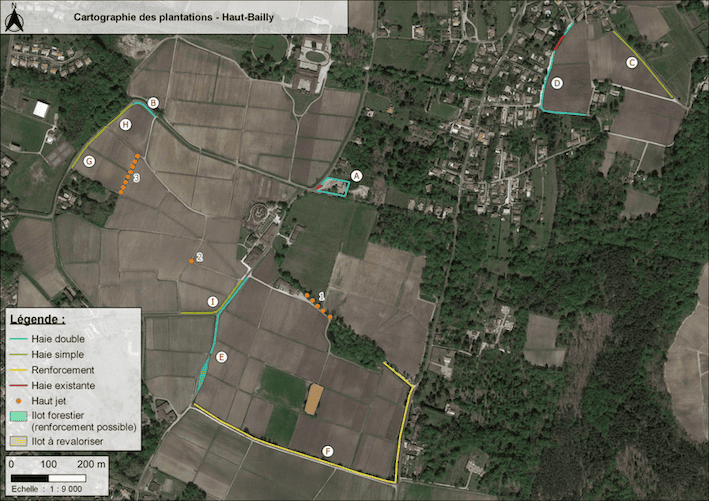
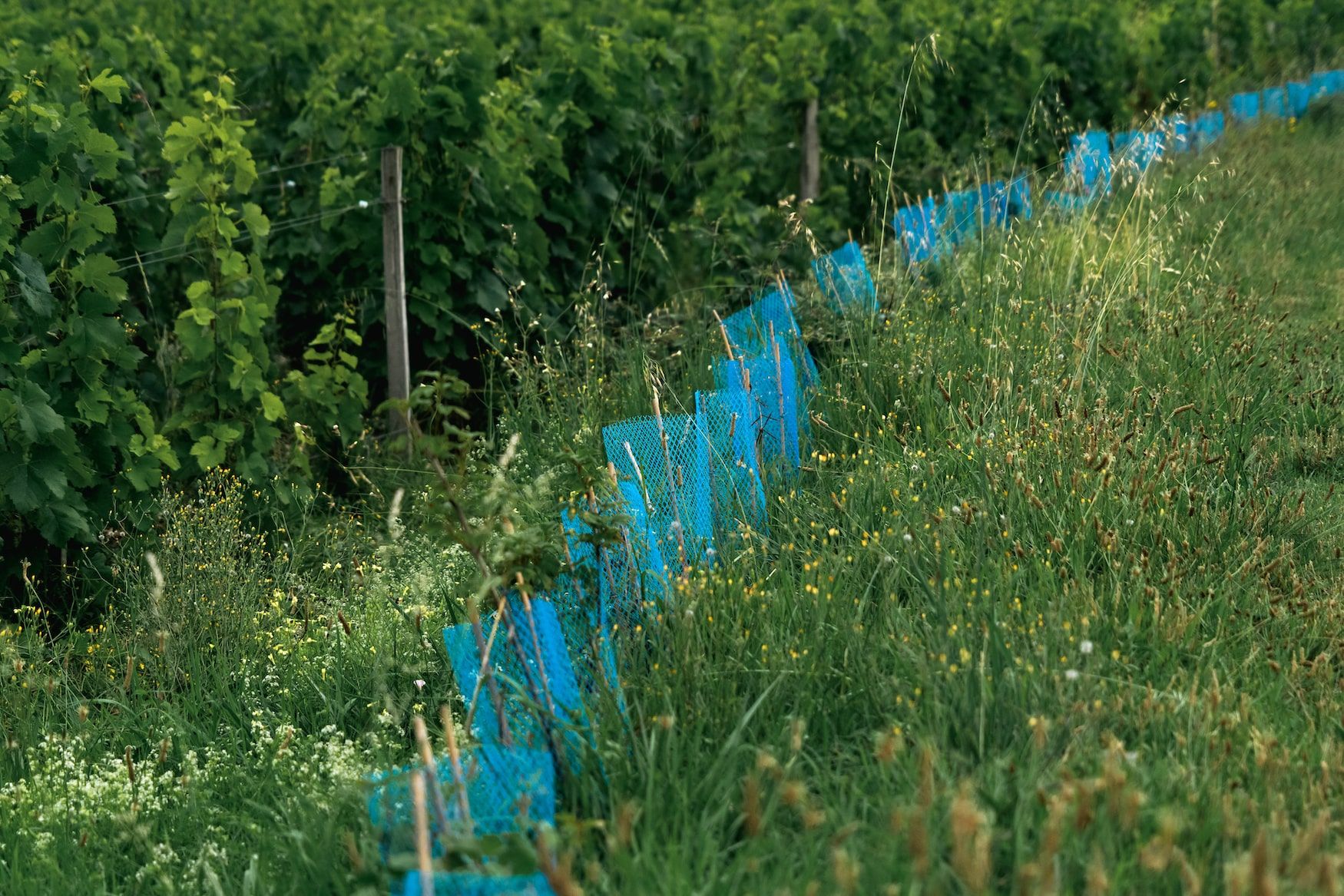
Multiple impacts
While regular monitoring and maintenance of the plantations are of course necessary, the benefits mentioned below will be generated gradually and spontaneously, as the trees grow.
Restoring a landscape unit
Planting hedges and trees in rows will help to split up plots and restore a bocage landscape. "We're not inventing anything; it's more a matter of recreating landscapes as they existed some 50 years ago," explains Pierre Hermans, head of the vitiforestry program for Reforest'Action's engineering office. The Haut-Bailly vineyard landscape is the estate's showcase, and its aesthetics have a major impact on the château's image. The creation of a panorama of trees, visible as early as two years after planting, will therefore influence the attractiveness of the wine-growing terroir. On a simpler level, trees can create a natural barrier between the vineyard and the rest of the landscape.
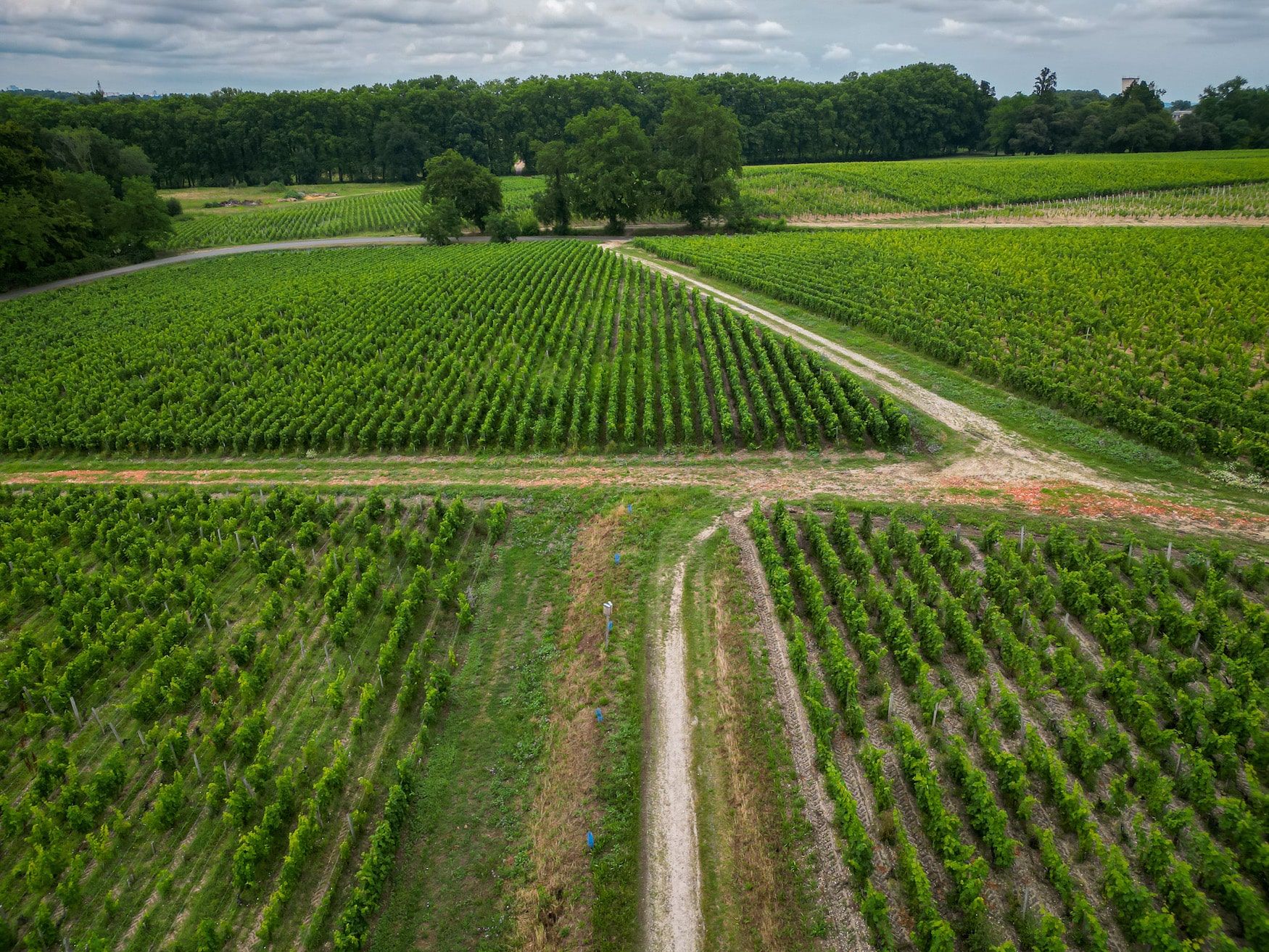
Adapting to climate change
The project will have a positive bioclimatic impact. With climate change, vines are budding earlier and earlier in the year. The buds thus uncovered are more vulnerable to late frosts, and some do not survive. Rows of trees will enable wind flows to circulate, with the aim of limiting cold draughts, and will act as natural windbreaks and barriers against the cold.
We call this bioclimatic conception. Indeed, the project's design has been tailored to the climatic characteristics of the location, in order to get the best out of it and avoid unwanted effects. As Pierre Hermans points out, "if the design is not adapted to the area, it can create more problems than benefits, by trapping cold air flows in the vines, for example. This is always a major concern."
Developing biodiversity
Thanks to a diversified mix of species, the planted trees and hedges will provide a home for local wildlife. The design is intended to enhance the biodiversity of the Haut-Bailly vineyard, a haven for many animals. In fact, the vineyard recently hosted the Ligue pour la Protection des Oiseaux (LPO) in order to carry out a biodiversity inventory. Numerous birds and other small animals were counted in the wooded areas bordering the plots. While wooden nest boxes have since been installed on the property, the trees planted by Reforest'Action will help to create even more natural habitats and provide ideal shelter.
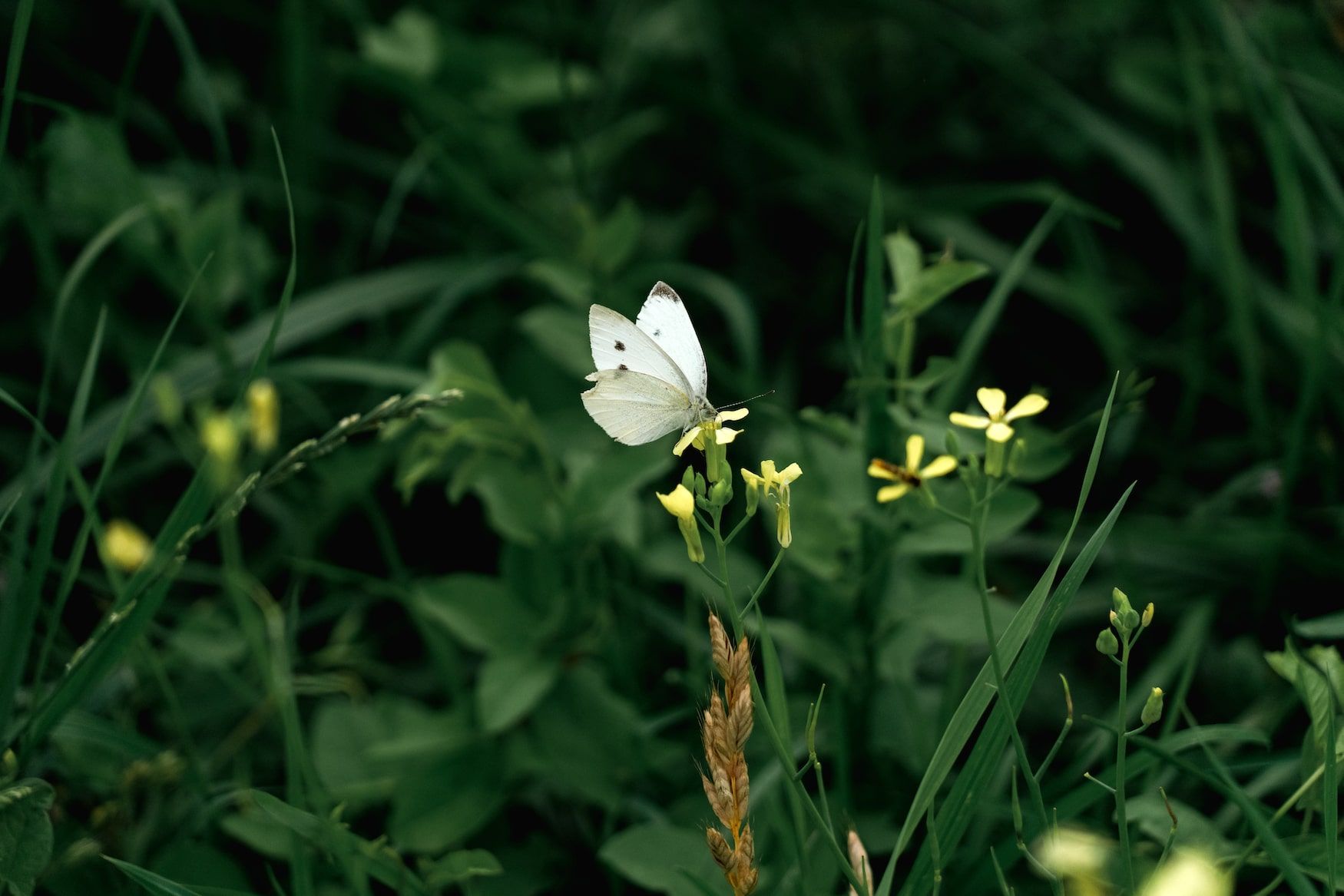
Promoting natural regulation
By encouraging the development of predators, such as insects, birds and bats, against vine pests, winemakers can further reduce the use of chemical inputs. Fewer chemical inputs also mean less stress for the vines themselves. The aim is to encourage the synergies that naturally exist between the various living organisms in an ecosystem, and to tend towards autonomous regulation of the environment.
Combating soil erosion
The impact of tree planting on the soils of the Haut-Bailly vineyard, an essential component of its terroir, is also noteworthy. The trees' root systems will help combat water and wind erosion, while creating conditions conducive to the development of a diversity of micro-organisms vital to maintaining life underground.
Reforest'Action's added value
"Vitiforestry is a fairly old but forgotten practice, and Reforest'Action is one of the pioneers looking to revive it," says Pierre Hermans. Whether in Champagne, the Loire, Burgundy, or now in Bordeaux with the Haut-Bailly project: over the last few years, Reforest'Action has acquired solid experience in vitiforestry through the development of several projects in France, within different geographical contexts.
Reforest'Action has become an expert in the design of tailor-made vitiforestry projects. "Our designs respect a series of restrictions: constraints of space, orientation, shading, water competition between trees and vines, and many others," emphasizes Pierre Hermans. Today, this expertise in the field enables Reforest'Action to support winemakers in their decision-making. "As guarantors of good practices, we work with wine producers to help them avoid costly mistakes. In many cases, we are the trigger that enables a simple idea to become a real project with a positive impact." But Pierre Hermans also insists on the need to remain humble: “We're still learning and progressing, and that only takes time. We're constantly checking and adjusting.”
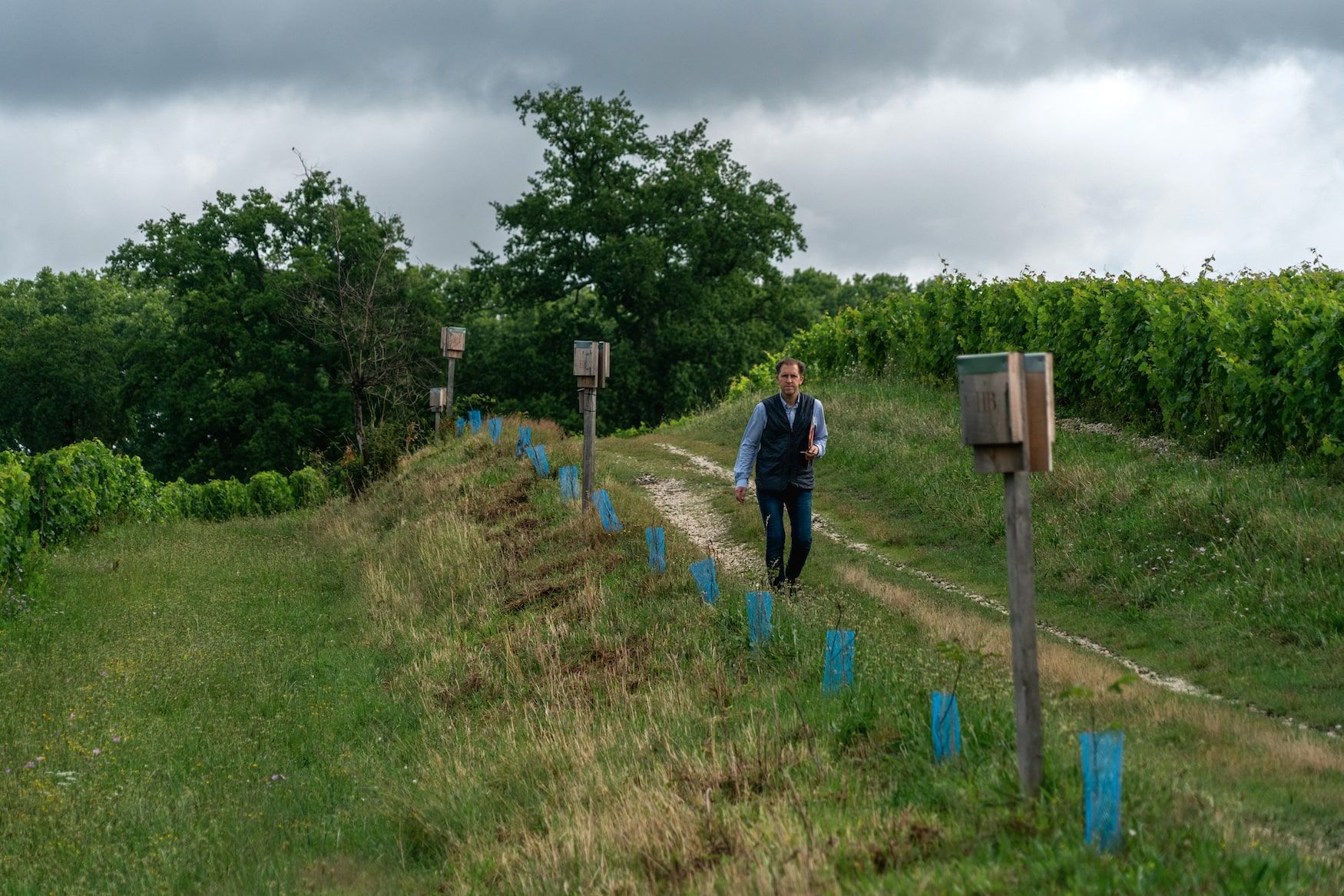
Co-construction, the keystone of vitiforestry
The high standards inherent in the creation of Haut-Bailly's fine wines is not without echoing the accuracy of Reforest'Action's work. To better understand the vision of the project's two stakeholders, let's consider the words of Pierre Hermans (Reforest'Action) and Véronique Sanders (Haut-Bailly).
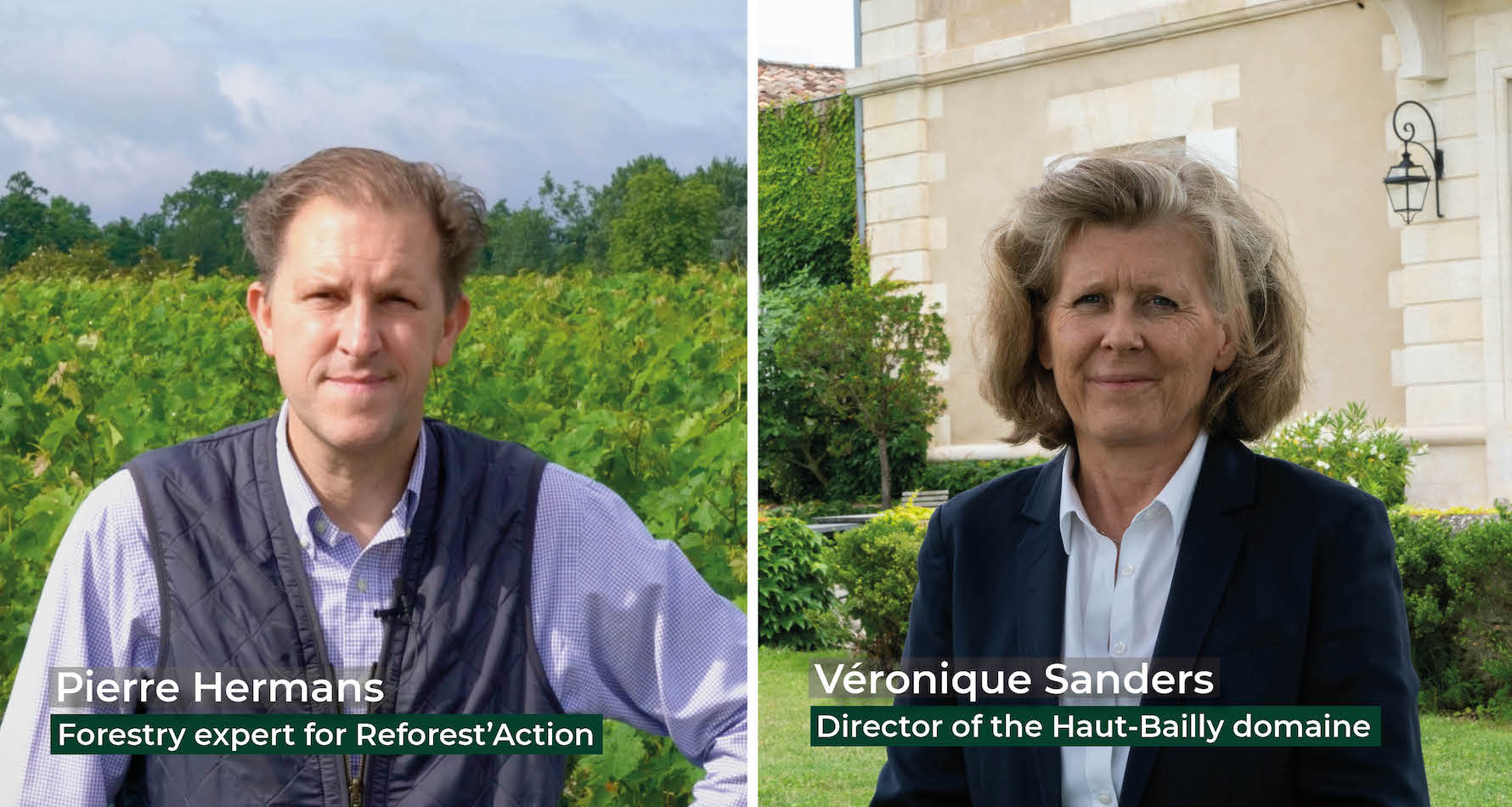
Pierre Hermans "The environmental dimension is the central pillar of the project. But we must keep in mind that we produce wine here. There's no question of interfering with vineyard management. We need to adapt to the day-to-day work of those in the field: understanding the needs of mechanization, taking into account the time and manpower required to maintain the trees, etc. That's why this project was designed in collaboration with the Haut-Bailly vineyard teams. This was a prerequisite for it to be well integrated into the life of the vineyard and accepted by all."
Véronique Sanders "It's our duty and our mission to respect the Haut-Bailly terroir, both to make the finest wines possible, and to pass it on to future generations. Our intention in developing this vitiforestry project is to be constantly on the move, thinking things through, not to stop at preconceived ideas, but to continue researching, analyzing, and improving. Haut-Bailly has always been considered a highly innovative vineyard, at the cutting edge of research and technology, and this project is a natural extension of this avant-garde approach.
Pierre Hermans "There was a lot of discussion with the Haut-Bailly team to find the best tree species or to define the right spacing between the trees and the vines. If a machine needs seven meters to make a U-turn, it must keep doing so once the trees have been planted. It's not just about theoretical knowledge, it's also about practical thinking.”
Véronique Sanders* "Reasoned experimentation is a key component of our DNA. This is how we address the issue of environmental transition, among other research topics. [...] Our attitude to environmental matters is first and foremost pragmatic, i.e. guided by common sense and the patient search for effective, sustainable solutions; secondly, it is scientific, inspired not by belief or ideology but by the reality of the facts and objective data available to us and resulting from in-depth research; and thirdly, it is focused on people: the health and well-being of our teams, our neighbors and, of course, our customers."
*Haut-Bailly en mouvement, 25 ans d’accomplissements
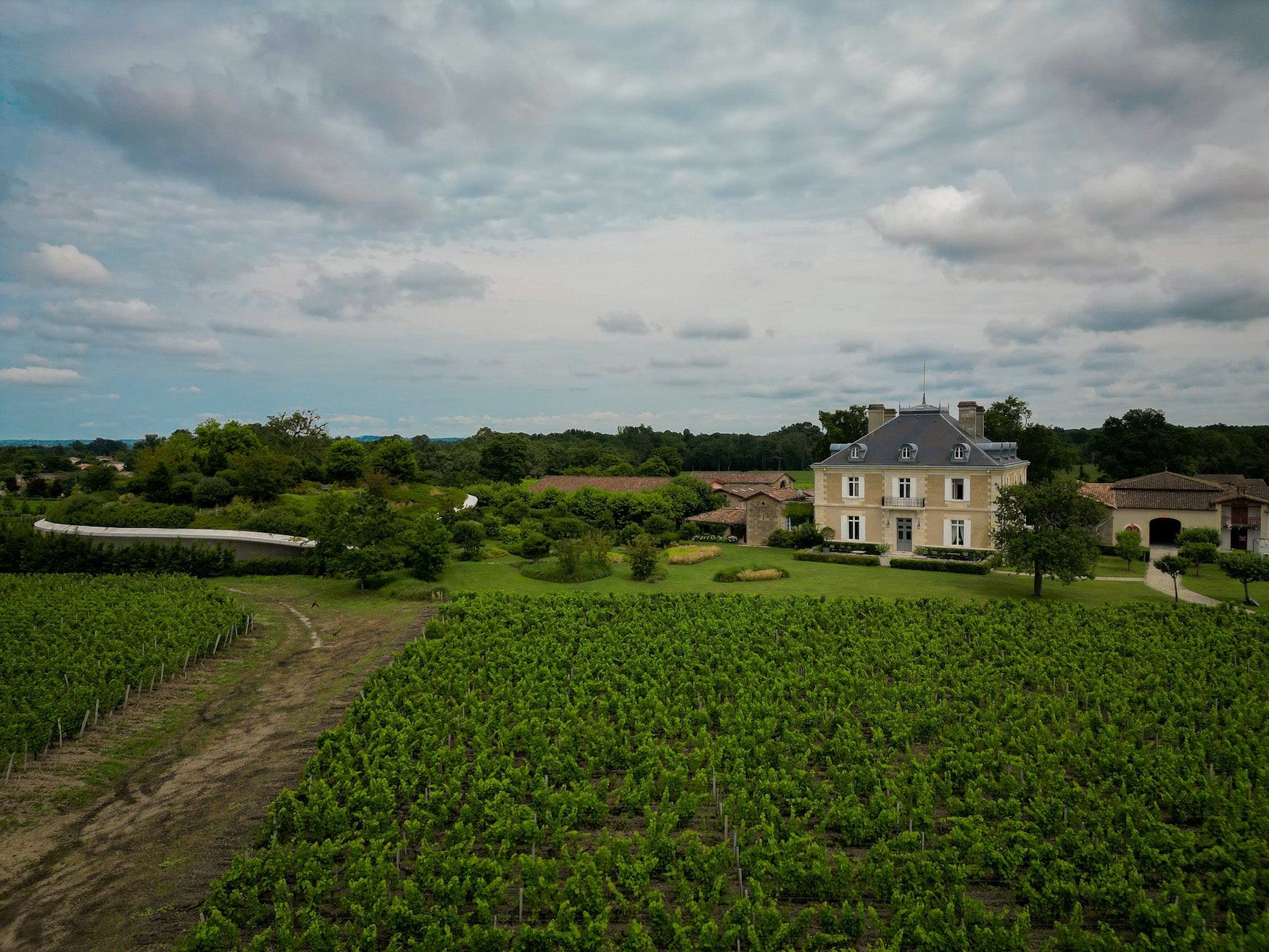
The project developed and financed by Reforest'Action in the heart of the Haut-Bailly vineyard is a perfect example of the high standards required to carry out vitiforestry projects. Involvement in the value chain of a renowned wine estate like Château Haut-Bailly calls for modesty and adaptation. The expertise we have acquired on projects with similar constraints means that we are now able to deliver fully customized solutions that generate net positive impacts on soil health, climate, biodiversity and society in general.
Vitiforestry is part of a broader regenerative agriculture approach, which aims to ensure the long-term resilience and stability of agricultural ecosystems, while maintaining the economic viability of farming activities. Producing raw materials while restoring natural ecosystems is possible.